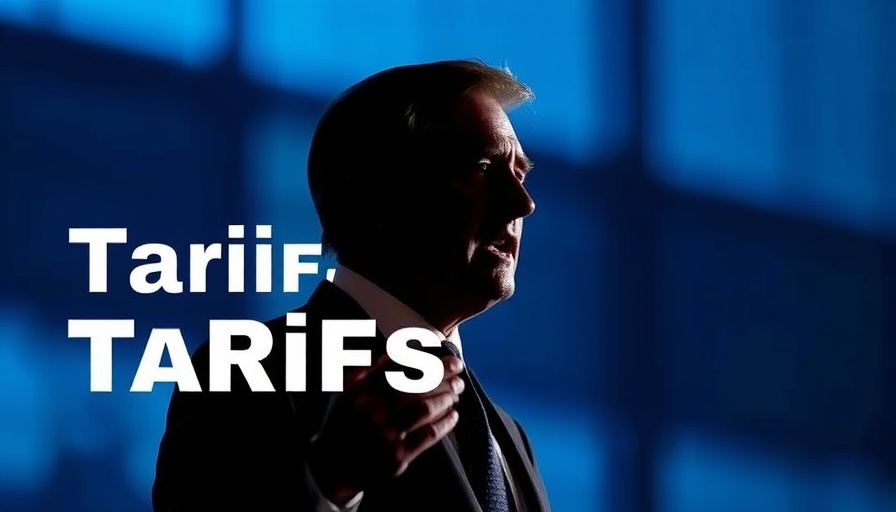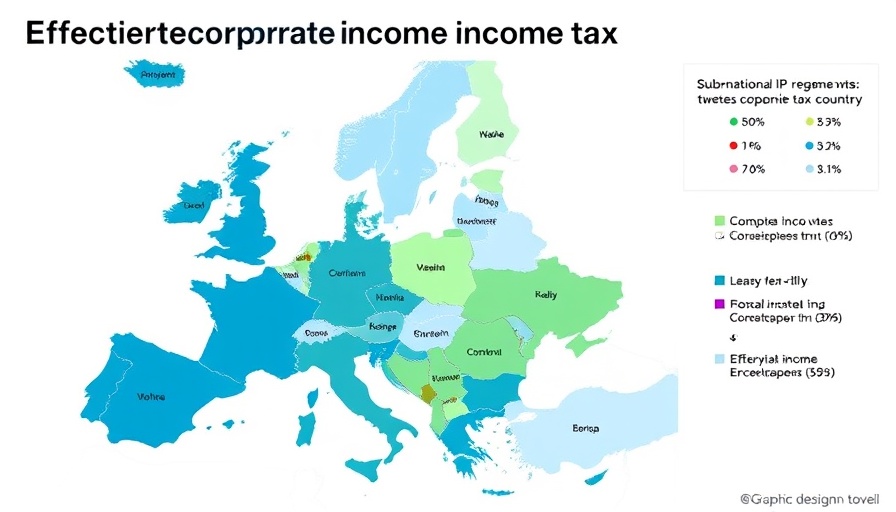
The Rising Tide of Trump Tariffs: An Overview
As economic tensions grow under the influence of international trade policies, the Trump administration's tariffs have become a focal point of heated debate. In its latest assessment, the Tax Foundation reveals that Donald Trump's trade measures could lead to substantial tax increases and deep cuts in U.S. GDP. While designed to protect American industries, these tariffs come with notable consequences that small to medium businesses and CPA professionals must navigate.
Historical Context of U.S. Tariffs
Historically, tariffs in the United States were often used as a tool to safeguard emerging industries. However, the recent trend under President Trump signifies a more aggressive approach to international trade dynamics. The implementation of tariffs on goods from countries like China and Canada threatens domestic business operations by driving up prices for consumers and restricting access to foreign markets. With tariffs reaching an average of 16.8%, this marks the highest level since World War II, raising questions about the long-term viability of these policies.
The Economic Implications: A Double-Edged Sword
According to estimates, Trump's tariffs are projected to generate $2.5 trillion in revenue over the next decade. However, this revenue comes at a cost—a shrinkage of U.S. GDP, potentially by 1.4% in 2026. This paradox encapsulates the challenge faced by businesses: navigating increased costs while wrestling with diminished economic growth. For small to medium enterprises, understanding these fluctuations becomes vital, as they must adapt to constantly changing market conditions driven by these tariffs.
The Complexity of Tariffs: What You Need to Know
Tariffs are more than just trade adjustments; they are effectively treated as tax increases for consumers. In 2025 alone, the tariffs are poised to represent the largest tax hike since 1993, with an estimated tax increase of $526 per household. For CPAs advising clients, understanding this tax implication and the potential impacts on consumer behavior and business profitability is essential.
Retaliation and Global Response: A Ripple Effect
From Canada to the European Union, U.S. trading partners have responded with retaliatory tariffs, affecting approximately $330 billion of U.S. exports. This raises another challenge: not only are American companies facing higher costs for raw materials, but they also risk losing competitiveness in international markets. Calculating the balance between tariff imposition and foreign retaliation will be critical as businesses craft strategies for 2025 and beyond.
Future Predictions: Navigating the Trade War Landscape
Experts predict that if IEEPA tariffs are disabled, overall market income may only be adversely affected by 0.2%. However, the broader implications remain unclear, as retaliatory actions and evolving global relationships could further complicate recovery efforts. For CPAs and business owners, staying informed about federal revenue trends and adjusting forecasts to reflect these tariff-related insights is imperative.
Strategies for Businesses: Adapting to Tariff Changes
In light of ongoing trade policies, businesses must deploy strategic responses to mitigate the financial impact of tariffs. This includes re-evaluating supplier relationships, considering domestic sourcing options, or even exploring markets that are less impacted by tariffs. CPAs can aid clients by offering insights into financial forecasting under new tariff structures, ensuring that businesses remain adaptable in a turbulent economic climate.
Final Thoughts and Call to Action
The complexity of Trump’s tariffs will require vigilance from both CPAs and business leaders as they navigate the evolving landscape of trade. With significant revenue implications and potential impacts on GDP, the pressure is on to strategize effectively and align practices with the latest economic realities. As trade discussions continue and new measures are put forth, it will be essential to stay ahead of the curve.
Don't hesitate to reassess your business strategies in response to these tariffs. For more insight on how to effectively adjust to this ever-changing economic environment and to access additional resources, reach out today and recalibrate your approach as needed to safeguard your interests.
 Add Row
Add Row  Add
Add 




Write A Comment